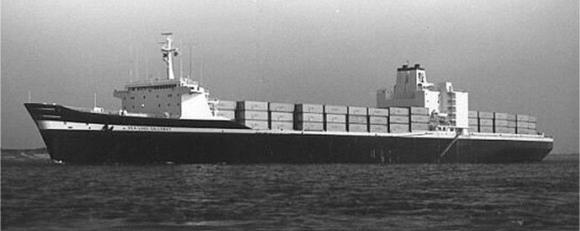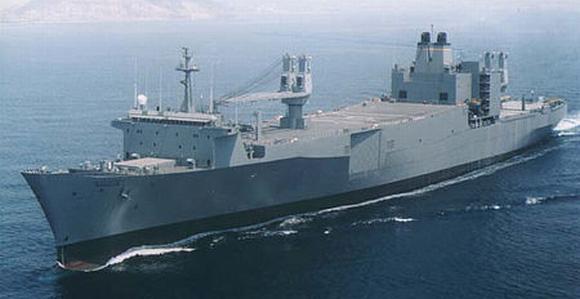 The recent activation by TRANSCOM of 28 cargo ships, makes it a good time to take a look back at eight iconic shps from the 1970s still in service today.
The recent activation by TRANSCOM of 28 cargo ships, makes it a good time to take a look back at eight iconic shps from the 1970s still in service today.
When I was a young student of naval architecture at the University of Michigan in the early 70s, I attended a Society of Naval Architects and Marine Engineers (SNAME) convention in New York City. In our visit, we took a field trip across the river to the Sea-Land container terminal at Elizabeth, New Jersey to tour a new SL-7 class container ship.
The eight SL-7s were Malcom McLean‘s modern-day clipper ships. As I stood on the pier looking up at the ship, I remember finding the long hollow water line to be breathtaking. And whereas the clipper ship Sovereign of the Seas was just over 250′ long, the SL-7s were close to 1000′ overall. With steam turbines producing 120,000 HP, these ships could cross oceans at 33 knots. They would each carry over 1,000 containers, making them the largest container ships in the world at that time.
Malcom McLean is rightfully referred to as the “father of containerization.” He was a visionary who changed cargo shipping and indeed much of world trade. His vision did not extend, however, to predicting the price of oil. When the ships were ordered the price for a barrel of oil was around $3. When the SL-7s were delivered, just in time for the 1970s energy crisis, the price was closer to $30 a barrel. The virtually brand new SL-7s became too expensive to operate. They simply burned too much fuel.
Just as Malcom McLean bet on low energy prices in the 1970s, just over a decade later, he bet on continued high energy prices when, at United States Lines, he built his twelve “Jumbo Econ Ships.” Just as the ships were being delivered in the mid-80s, oil prices which had been predicted would double, collapsed. By the end of the decade, US Lines was in bankruptcy, the largest bankruptcy filed in US history up to that time.
What happened to the SL-7s? Sea_Land was able to sell them to a shipowner who didn’t care quite as much about fuel costs — the US Navy. The Navy wanted the ships for their speed. They had no use whatsoever for gearless container ships but loved the idea of a 33-knot cargo ship.
In 1981, with the ships less than ten years old, the US government bought six of the ships for $207 million and would subsequently buy the remaining two ships. The Navy would spend another $700 million to convert the gearless container ships to RO/ROs with limited container capacity and pedestal deck cranes.
Designated as the Algol-class vehicle cargo ships, also known as Fast Sealift Ships (FSS) have proven to be highly useful to the military. They are still the fastest cargo ships in the world today. During Operations Desert Shield and Desert Storm, seven of the FSS ships delivered a cargo equivalent of 116 World War II Liberty ships.
Three of the 28 ships recently activated by TRANSCOM were FSS ships — SS Bellatrix, ex SS Sea-Land Trade; SS Capella, ex SS Sea-Land McLean; and SS Regulus, ex SS Sea-Land Commerce.

SL-7 Converted to FSS

We used to see these beautifully shaped SL 7’s in Rotterdam but they had a reliabillity problem and we were much larger.Our Tokyo Bay class had 82000 shp to give 31 knots on trials in 1971 and carried 3000 teu’s.But fuel crisis in 1973 caused our 400 tons per day to mean dropping speed and eventual conversion to twin diesel.Was good to see the SL 7’s still working,our OCL ships are long gone.